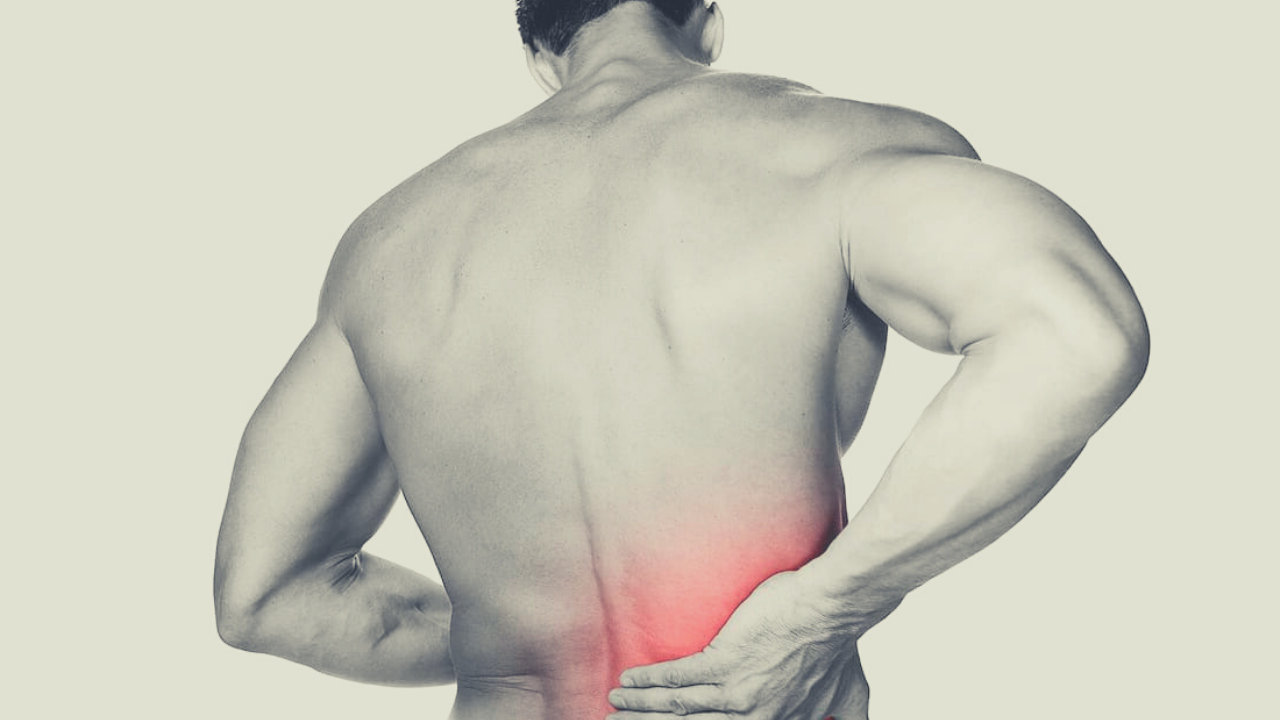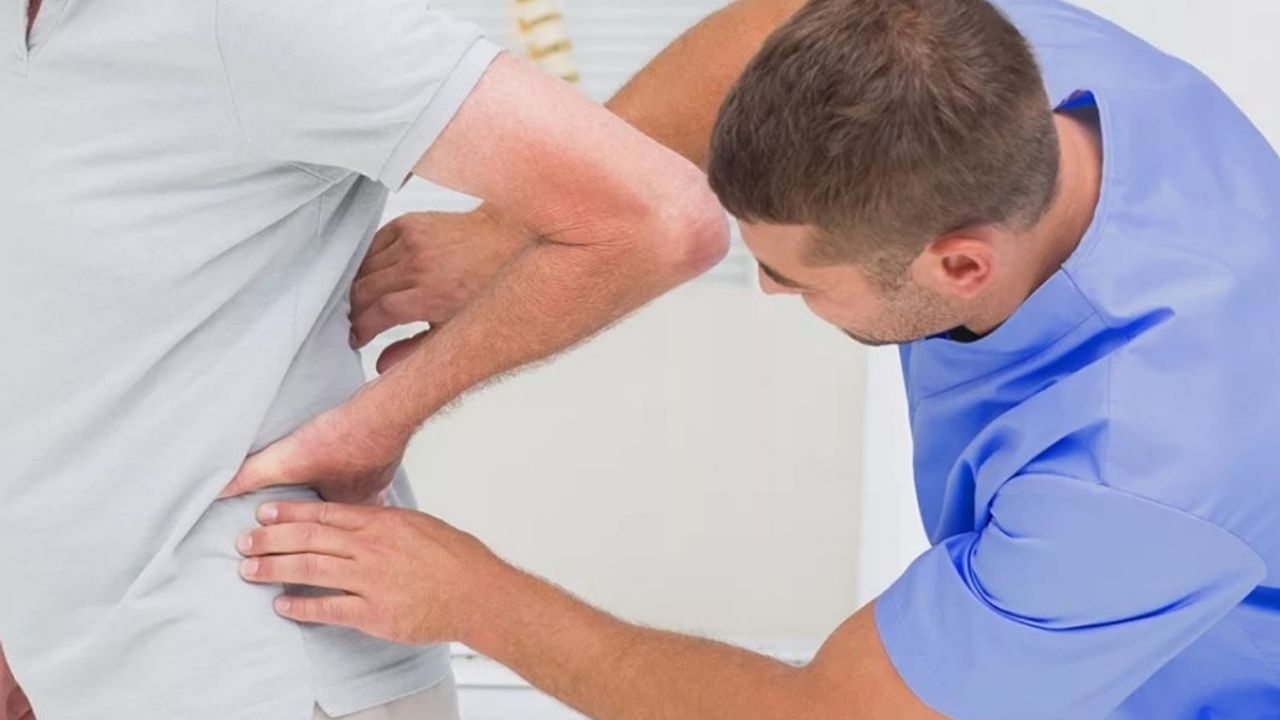Back pain lower right side, is a symptom that is rarely overlooked. Most people associate it with working in a sitting position, lifting weights or osteochondrosis and are in no hurry to see a doctor. In fact, this condition can signal diseases of the kidneys, liver or intestines, and problems with the musculoskeletal system will not go away by themselves. Only a timely examination by a specialist and a full examination will help to identify the cause of the pain and choose the right treatment.

General information
The lower back is an area subject to significant stress due to being upright. The vertebral column is represented by five large vertebrae, which are additionally strengthened by the muscular frame. 9 out of 10 cases of pain in this area are provoked precisely by the pathology of the musculoskeletal system: osteochondrosis, muscle spasm, herniated disc, pinching of the nerve root.
The remaining 10% of cases are associated with diseases of internal organs located in the projection of the lower back: kidneys, genitourinary system, intestines, liver. Even a doctor, upon examination, cannot always accurately determine the cause of the pain, which is why this condition requires careful laboratory and instrumental diagnostics.
Types of back pain lower right side
The first thing the doctor asks about is the nature of the sensations. Depending on the underlying cause, back pain lower right side can be:
- acute: usually occurs sharply, is highly intense; the duration of sensations is no more than 1.5 months;
- subacute: lasts 6-12 weeks;
- chronic: sensations of any intensity lasting 12 weeks or more;
- transient (variable): appears periodically;
- aching;
- strong, medium intensity, weak.
This division is arbitrary. Depending on the situation and circumstances, the nature and duration of the sensations may vary. It is important to describe them as fully as possible to your doctor.
Causes of back pain lower right side
There are many reasons why the back in the lumbar region begins to hurt. The most common provoking factors are:
- hypothermia;
- lifting weights;
- uneven distribution of the load (against the background of pregnancy, posture disorders, pathology of the musculoskeletal system);
- infectious lesion;
- diseases of the musculoskeletal system;
- inflammatory processes, including autoimmune;
- long stay in an uncomfortable position;
- changes in the composition of bone tissue (osteoporosis);
- volumetric processes: benign and malignant tumors, abscesses;
- hormonal changes (menstruation, pregnancy, menopause);
- kidney disease (urolithiasis, pyelonephritis, glomerulonephritis, abscesses);
- pathology of the gastrointestinal tract;
- diseases of the uterus and appendages in women, prostate in men, etc.
Diseases
Back pain lower right side can be a symptom of various diseases of the musculoskeletal system and internal organs. The main task of the doctor is to find out what exactly caused the deterioration of the condition and take the necessary measures.
Here are the most common pathologies.
Bechterew’s disease (ankylosing spondylitis)
It is a systemic inflammatory disease in which individual vertebrae are fused into a single conglomerate. At the same time, calcium is deposited in the ligaments that stabilize the spine, as a result of which the affected area almost completely loses its mobility.
Distinctive features of low back pain in ankylosing spondylitis include:
- an increase in intensity at rest, especially with prolonged exposure to a horizontal position;
- stiffness of movements in the lumbar region;
Osteochondrosis of the lumbar spine
This is a very common disease in which there is a thinning of the intervertebral discs, which act as shock absorbers. The result is irritation of the nerve roots and spasms of the surrounding muscles, causing severe pain. In the late stage of the disease, a herniated disc forms, which can press on the spinal cord, increasing pain.
With osteochondrosis, the pain increases:
- when lifting from a sitting or horizontal position;
- when trying to lie on your stomach;
- when tilting.
If the disease has caused the formation of a massive hernia, pain in the lower back is often accompanied by numbness and or weakness in one or both legs.
Curvature of the spine in the lumbar spine (kyphosis, scoliosis)
Pain in this pathology occurs at the middle and late stages of the development of the disease. Discomfort usually occurs towards the end of the day and is often accompanied by fatigue of the back muscles. The pain is often caused by a spasm of the muscles of the spine, and muscle spasm at a distance (gluteal, periarticular muscles of the upper and lower extremities) is also possible.
Spondyloarthrosis
This is a degenerative- dystrophic disease of the cartilage tissue covering the intervertebral discs. It gradually becomes thinner and destroyed, bone growths (osteophytes) appear around the affected area. As a result of reducing the distance between the vertebrae, the spinal canal narrows, and irritation of the nerve roots and spinal cord occurs.
Pain with this pathology:
- increases after exertion (prolonged standing, walking) and disappears after rest;
- accompanied by stiffness of movements, first in the morning, then constant;
- can give to the thigh and hip joint area.
The muscles in the affected area spasm and are constantly in tension, which also increases pain.
Urolithiasis disease
Back pain lower right side can also result from:
An attack of urolithiasis is characterized by severe lumbar pain from the affected kidney. At the same time, the sensations do not change depending on the posture, a person cannot find a position in which they weaken at least a little. The attack is often accompanied by a reduction in the amount of urine and a reddish color change.
- algomenorrhea (painful periods);
- pregnancy;
- inflammation of the pancreas;
- osteomyelitis;
- intestinal obstruction;
- appendicitis, etc.
Pain in various parts of the back
Localization of pain sensations can tell a lot about their cause. Pain in the upper lumbar region may result from:
- spine diseases;
- trauma;
- muscle spasm against the background of their overstrain;
- cardiovascular disease;
- tumors;
- diseases of the gastrointestinal tract.
If the epicenter is in the lower part of the lower back, the list of probable causes includes, in addition to diseases of the spine:
- kidney pathology (pyelonephritis, urolithiasis);
- disruption of the intestines (constipation, flatulence);
- spasms or inflammation in the pelvic organs (salpingo- oophoritis, endometritis);
- physiological reasons, in particular pregnancy;
- pinching of the sciatic nerve.
Displacement of pain to the right or to the left may indicate damage to the corresponding root of the spinal cord, kidney.
Diagnosis of back pain lower right side

Diagnosing back pain lower right side, requires a comprehensive examination. The first step in finding a cause is a survey. The doctor specifies:
- localization of pain;
- its nature and duration;
- reasons causing an attack or intensifying pain;
- circumstances under which the condition improves (a certain posture, immobility, taking medications, etc.).
It is mandatory to collect data on injuries and diseases, already identified chronic pathologies. Further possible diagnostic search at the discretion of the doctor includes:
- general analysis of blood and urine: helps to identify the inflammatory process in the body, kidney pathology;
- biochemical blood test to detect signs of damage to the kidneys, pancreas, liver and gallbladder, etc.;
- Ultrasound of the abdominal cavity and small pelvis, in men – ultrasound of the prostate gland;
- Ultrasound of the kidneys;
- X-ray, CT, or MRI of the lumbar spine
- chest x-ray.
If you suspect any pathology after a survey diagnosis and examination, more targeted analyzes, examinations and consultations of narrow specialists are prescribed. They allow you to clarify or refute the diagnosis.
Lower back pain right side above buttocks treatment
Treatment for back pain depends on the cause. Neurologist, urologist, gynecologist, and surgeon can deal with pathology. When it comes to diseases of the musculoskeletal system, doctors use medication, non-medication and surgical methods to improve the patient’s condition.
Drug treatment
The most common remedies for lumbar pain are non- steroidal anti-inflammatory drugs (NSAIDs). These are drugs based on diclofenac, nimesulide, ibuprofen, meloxicam and their derivatives. They are prescribed in the form of tablets, intravenous and intramuscular injections, rectal suppositories, as well as topical creams, ointments and patches. The decision on the dosage of the drug, as well as the duration of the course, is made by the doctor, since the uncontrolled use of these drugs can cause unpleasant side effects.
If NSAIDs are ineffective, doctors prescribe hormones (corticosteroids). They also stop inflammation and reduce pain.
The third group of drugs that improve the patient’s condition are antispasmodics (mydocalm, sirdalud). They relieve muscle spasms in the lumbar region.
Additionally, the following can be assigned:
- decongestants to reduce swelling of the pinched root;
- B vitamins to improve nerve conduction;
- sedatives.
Non-drug methods
Drug-free treatment complements drug regimens. Depending on the clinical situation, it may include:
- physiotherapy procedures (magnetotherapy, laser exposure, electrophoresis, etc.);
- physiotherapy exercises: a course of exercises is developed individually in accordance with the main and concomitant diseases; gymnastics should be performed regularly, not only in the clinic’s office, but also at home, only in this case it has an effect;
- fortifying and therapeutic massage (carried out without exacerbations);
- acupuncture;
- manual therapy and help from an osteopath.
Surgery
The help of surgeons is necessary if the attending physician, based on the general picture, identifies one of the indications for surgical treatment. In itself, the presence of a herniated disc is not an indication for surgical treatment, regardless of its size. Depending on the indications, doctors can remove a herniated disc, eliminate compression of the spinal cord root, remove a tumor, etc. The decision to carry out a particular operation is made on an individual basis.
Prevention of back pain lower right side
The most effective way to prevent lower back pain right side above hip is to adjust your lifestyle in order to spare the kidneys, the spine, and the pelvic organs, but if pain still occurs, then this should be the reason for an extraordinary visit to a specialist:
- avoid hypothermia;
- prevent hypodynamia;
- play sports at an amateur level (swimming has a particularly beneficial effect on the condition of the spine and back muscles);
- eat right and balanced: avoid overeating, minimize fatty, spicy, overly salty foods;
- exclude alcohol and nicotine;
- drink at least 1.5 liters of clean water daily, excluding tea, coffee or juices;
- keep the body mass index at a normal level: being overweight badly affects the condition of the spine, and a deficiency can cause kidney prolapse.
If a person has already been diagnosed with pathology of the musculoskeletal system, it is advisable to take preventive courses at least twice a year, according to recommendations for the rehabilitation of spinal pathology, in accordance with the doctor’s prescription.
Back pain is not necessarily a problem with the spine or muscles. Even a slight discomfort can be a sign of dangerous diseases such as urolithiasis or malignant tumors. Do not ignore this symptom.